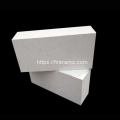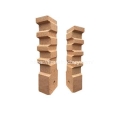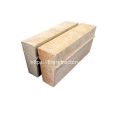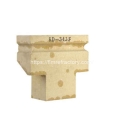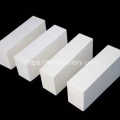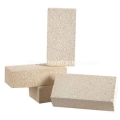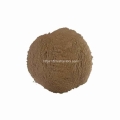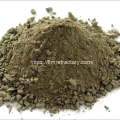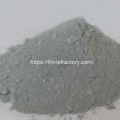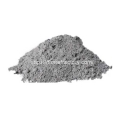- Performance. Innovation. Worldwide. Your trustworthy Refractories Manufacturing Partner--Fireramo
- +86 175 3769 7777
Contact
Contact us on WhatsApp
High Quality Refractory Bricks
Insulation Bricks for Sale
Monolithic Refractory
How to choose refractory materials for refractory lining repair?
In the high-temperature industry, refractory linings are a critical component in maintaining the proper operation of equipment. However, for a variety of reasons, refractory linings can become damaged and need to be repaired. Selecting the right refractory for refractory lining repair is particularly important and Fireramo will discuss in detail how to select a refractory for refractory lining repair to help you better understand the process.

The importance of refractory materials
Refractory materials play an indispensable role in high-temperature industrial equipment. They need to withstand extremely high temperatures and a variety of harsh environments to provide protection for the stable operation of equipment. Once the refractory lining is damaged, it is crucial to choose the appropriate repair refractory materials, which is directly related to the performance and safety of the equipment.
Considerations for selecting a refractory repair material
Refractoriness
Refractoriness is an important indicator of refractory performance. When selecting materials for repairing refractory linings, it is necessary to ensure that they have sufficient refractoriness to withstand high-temperature environments. According to the actual application requirements, select the appropriate refractoriness level to ensure that the material can still maintain stable performance at high temperatures.
Chemical Stability
In a high temperature environment, refractory materials are exposed to a variety of chemical substances. Therefore, good chemical stability is an important consideration in the selection of refractory lining materials for repair. Refractory materials should be able to resist the erosion of acidic, alkaline and other corrosive gases or substances to ensure their service life and long-term stable operation of the equipment.
Mechanical properties
Refractory materials must have sufficient mechanical strength to withstand forces such as high temperature and pressure. Mechanical properties such as compressive, flexural and abrasion resistance are key indicators of the quality of refractory materials. Selecting repair refractories with excellent mechanical properties can ensure their stability and durability in complex environments.
Construction factors
When selecting refractory materials for repairing refractory linings, construction conditions and workability also need to be considered. The workability of a material has an impact on its range of applications. Good workability means an easier construction process and lower construction costs. The curing time of the material is also a factor to be considered, which affects the efficiency and effectiveness of the repair work.
Environmental factors
When selecting refractory materials for repairing refractory linings, the environmental conditions in which the equipment is located need to be considered. Temperature, pressure, atmosphere and other environmental factors have an impact on the performance and service life of refractory materials. Selecting the appropriate refractory material according to the actual working environment can improve the adaptability and stability of the material.
Precautions for refractory lining repair
Before refractory lining repair, the equipment should be comprehensively inspected and analyzed to understand the degree and cause of damage. This helps to select the appropriate repair materials and processes.
Priority should be given to refractory material manufacturers with reliable quality and brand assurance to ensure that the quality and performance of the materials meet the requirements. At the same time, pay attention to the environmental performance and sustainability of the materials.
In the construction process, standardized operation procedures should be followed to ensure the smooth progress of the repair work. At the same time, strengthen the safety management of the construction site to prevent accidents.
After completing the repair, the equipment should be strictly inspected and tested to ensure that the repair effect meets the expected requirements. If necessary, follow-up maintenance and maintenance can be carried out to ensure the long-term stable operation of the equipment.
The establishment of a complete refractory lining repair records, including the use of materials, construction process, test results, etc., for follow-up work to provide reference and basis.
Selection of suitable refractory materials for refractory lining repair is crucial for the normal operation of the equipment. In actual operation, various factors should be considered comprehensively, and comprehensive assessment and selection should be made from both theoretical and practical aspects. Through correct material selection and standardized construction operation, the stability and safety of the equipment can be improved and its service life can be extended.
Specializing in refractory materials for over 20 years, we provide professional refractory solutions for the global high temperature industry.
Related Posts:
- Causes and solutions to cracking of castables after baking
- Enhancing the Medium Temperature Strength of Refractory Castables
- Ways to ensure the accuracy of refractory brick acceptance results
- Acceptance inspection after cement kiln construction
- Three Common Ways of Damage to the Sliding Nozzle for Ladles
Theme By Fireramo
